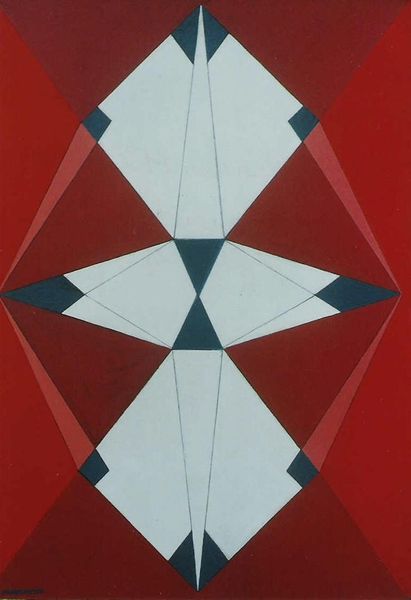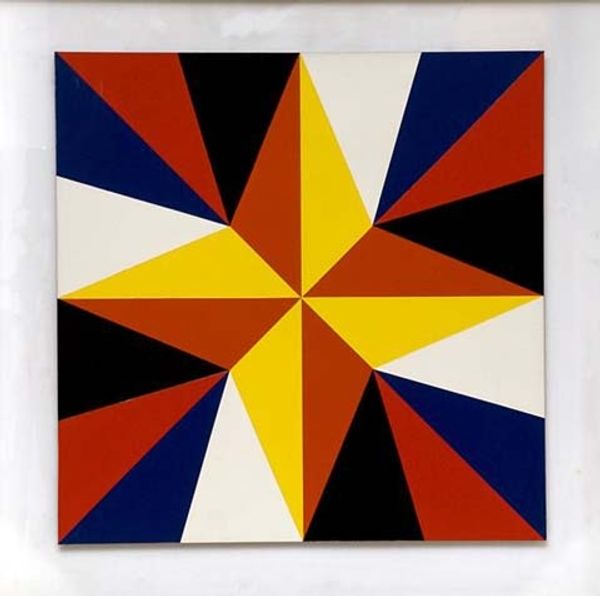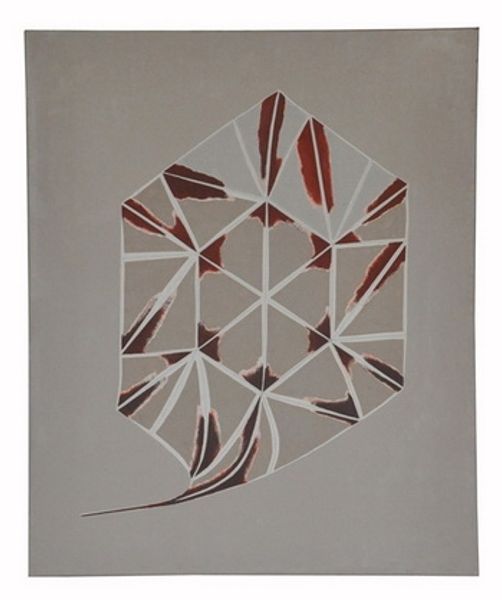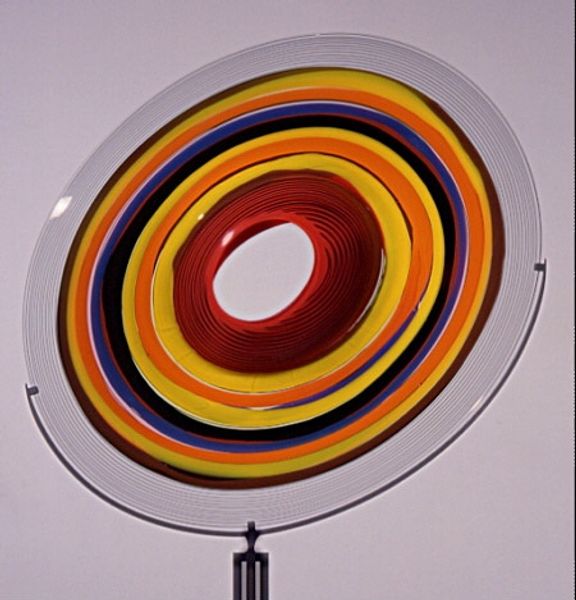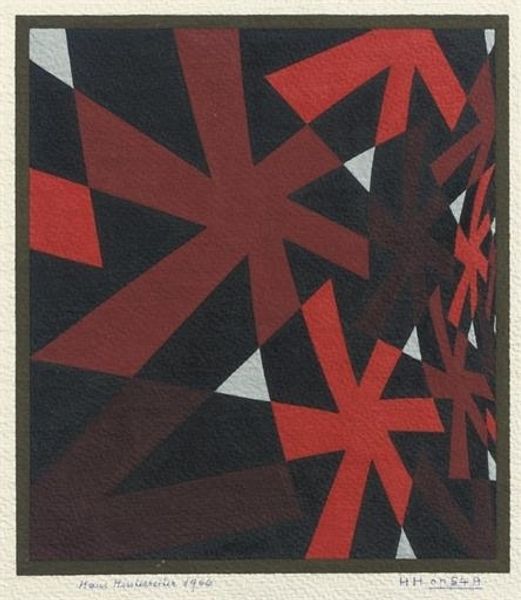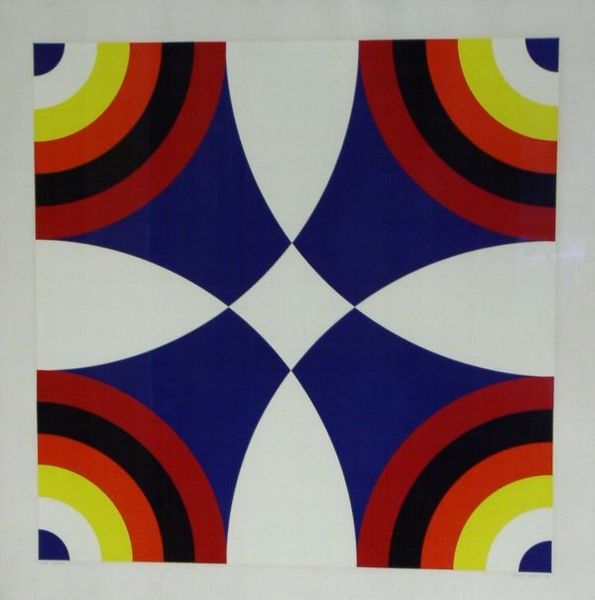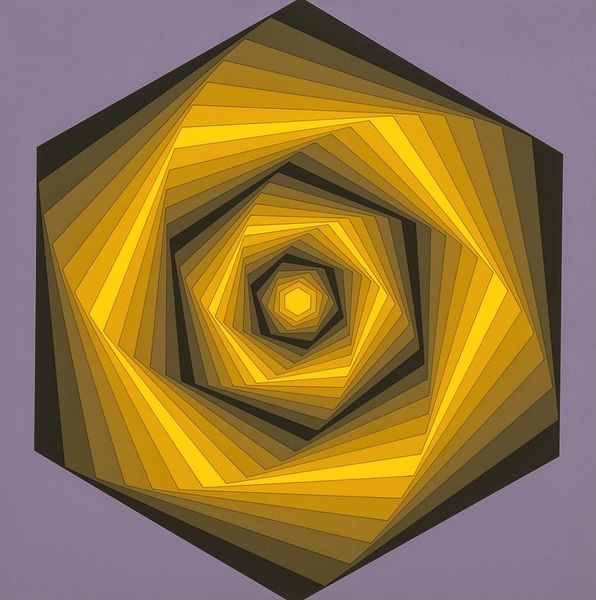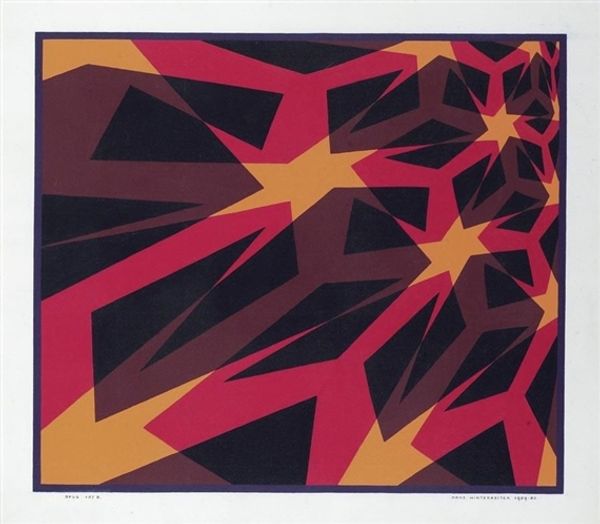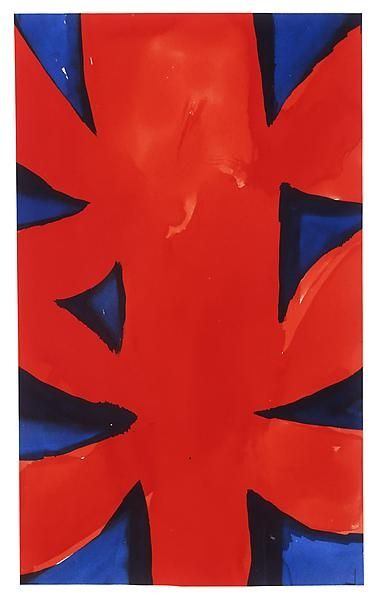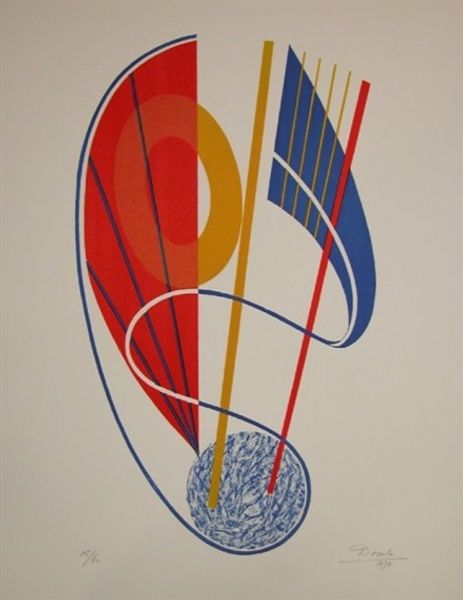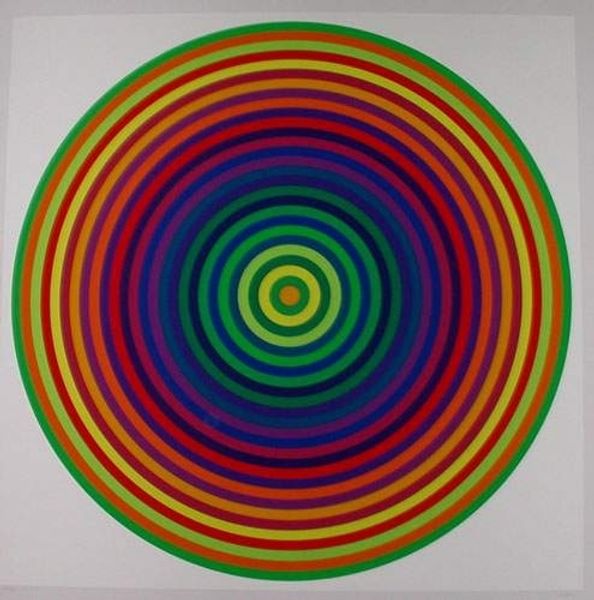
acrylic-paint, sculpture
pop art-esque
pop art
acrylic-paint
form
geometric
sculpture
pop art-influence
abstraction
pop-art
line
Dimensions: 248.9 x 170.2 cm
Copyright: Roy Lichtenstein,Fair Use
Curator: Ah, Roy Lichtenstein's "Explosion I," made in 1965. It’s hanging here at the Museum Ludwig in Cologne. Editor: Pow! That just about sums it up, doesn't it? What strikes me first is its unexpected dimensionality. I suppose I was prepared to see it as an industrial image—flat and reproducible, in the spirit of its mass production context—but I find myself fascinated by how palpably present the layered acrylic pieces are. Curator: I’m glad you mentioned "palpable." There’s something almost sculptural about the work; Lichtenstein brings a comic book trope into three dimensions. We are talking about benday dots, stripes and vivid colors but the artwork actually transcends to something more primal, even biological! Editor: Absolutely! Consider acrylics as materials. What implications emerge when one suspends the notion of mass manufacturing and allows for considerations of handmade uniqueness and labor within Pop Art production? After all, Lichtenstein and his assistants cut, assembled, and painted these shapes, transforming raw industrial stuff into iconic forms, thereby emphasizing process over replication. Curator: Right, right. I get that. But maybe this so called "emphasis of the process" is, in itself, ironic. To me the perfection that he strives for, making every painted line sharp, precise, the colors so vibrant is somehow saying that art has no mistakes. Everything is intentional... perfectly crafted! Like a comic panel frozen in a timeless expression of...explosion. Does it make sense? Editor: Sure, although I'm reluctant to associate craft with timeless perfection. In my perspective the imperfection is, in a way, part of the narrative: the traces of making the piece human. By showing these manual processes within a supposedly "mass-produced" context, Lichtenstein draws our attention to all that hides under that Pop aesthetic of easy accessibility and fun, questioning the role of the artist. Curator: But who is really fooled by that apparent carelessness? Lichtenstein wanted that and you are part of the big, orchestrated performance... So let's move on. I’m starting to have my doubts! Editor: I agree that may be so, but also understanding these art dynamics and power balances and all this behind-the-scene drama allows us a fresh view into art, shifting from aura to making and materiality.
Comments
No comments
Be the first to comment and join the conversation on the ultimate creative platform.
